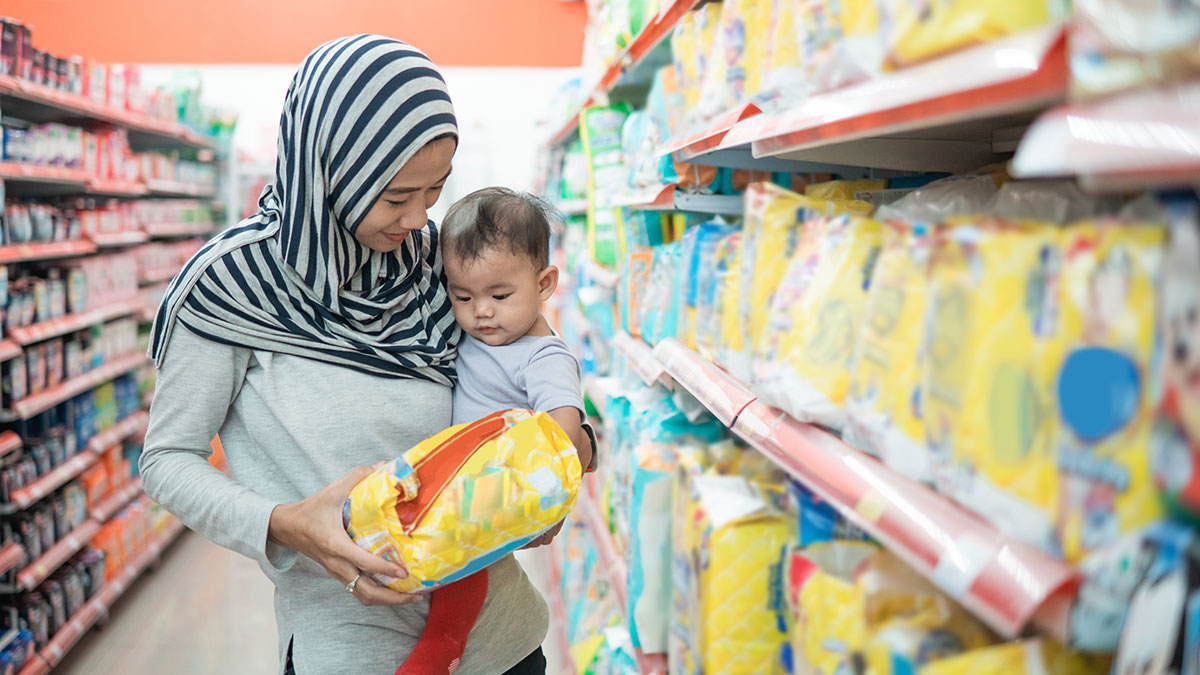By: Tom Duffy, Senior Advisor, Industry Relations, FMI

Customers may move their carts around different aisles and screens as they go about their shopping journey, but their ultimate impression of a store experience is holistic. Did they find the products they wanted or that interested them? Were they able to stock up for their home, their pantries and themselves? Did they find value? Was it easy to shop or frustrating?
A successful total store experience for the consumer requires total store collaboration between the food retailer and its trading partners. That is especially important in today’s operating environment—when record-high inflation is the latest challenge for food retailers seeking to drive profitable growth.
In today’s climate, the approach of total store collaboration enables retailers to help their consumers find value, both in specific product price points and in the overall value of their shopping journey. Total store collaboration is a big umbrella that covers many aspects of operations but one important part of it is the integration in both mindset and merchandising of all products in a store.
Consumers and the industry tend to be food-centric when it comes to grocery shopping. A look at most baskets, though, reveals a decided mix of foods and nonfoods that span general merchandise (GM), household and health and beauty care (HBC). Recent IRI data showed that GM/HBC sales constituted at least 10% of all grocery sales in a 52-week period. For some shoppers, shampoo and paper towels may be even higher on their list than bread and meat.
When working on total store collaboration strategies to deliver value to inflation-wary shoppers, retailers and their wholesaler and manufacturer partners should look across all categories to find growth opportunities. Tactics can be as straightforward as boosting end cap displays in GM/HBC parts of the store, or cross-merchandising food and nonfood products for occasions (paper plates, salty snacks and chicken wings for the Big Game or coolers and beer for the start of summer). Even pairing competitively-priced private brand over the counter cold medications with tea bags and honey can be effective.
Beyond merchandising, retailers can execute other tactics. Given the plethora of data and the availability of grocery tech tools, total store collaborative efforts can deliver more personalized suggestions and special offers to shoppers. In addition, staying competitive in pricing in GM/Household/HBC categories keeps the store top of mind among shoppers who want to rein in costs and also cut down on the number of shopping trips and orders.
Retailers and their trading partners can also take advantage of resources created to support them in this effort. FMI’s new GM/Household/HBC initiative was launched in 2022 to extend the total store collaboration concept in grocery. The addition of this initiative and its new educational opportunities and resources comes at a pivotal moment—when shoppers are increasingly looking to food retailers and brands to provide products that meet their household needs as well as their budgets.
Retailers, wholesalers, distributors and manufacturers can learn more about the new GM/Household/HBC initiative and how they can grow their business with new ideas, products and solutions at the upcoming FMI Midwinter Executive Conference. On Saturday, Jan. 21, FMI presents a session on Total Store Collaboration in an Inflationary Environment. Moderated by Amanda Lai, senior consulting manager and food retail practice lead with McMillan Doolittle, the program features Neil Stern, CEO of Good Food Holdings and Jill Blanchard, president, enterprise client development, Advantage Solutions.

 Industry Topics address your specific area of expertise with resources, reports, events and more.
Industry Topics address your specific area of expertise with resources, reports, events and more.
 Our Research covers consumer behavior and retail operation benchmarks so you can make informed business decisions.
Our Research covers consumer behavior and retail operation benchmarks so you can make informed business decisions.
 Events and Education including online and in-person help you advance your food retail career.
Events and Education including online and in-person help you advance your food retail career.
 Food Safety training, resources and guidance that help you create a company food safety culture.
Food Safety training, resources and guidance that help you create a company food safety culture.
 Government Affairs work — federal and state — on the latest food industry policy, regulatory and legislative issues.
Government Affairs work — federal and state — on the latest food industry policy, regulatory and legislative issues.
 Get Involved. From industry awards to newsletters and committees, these resources help you take advantage of your membership.
Get Involved. From industry awards to newsletters and committees, these resources help you take advantage of your membership.
 Best practices, guidance documents, infographics, signage and more for the food industry on the COVID-19 pandemic.
Best practices, guidance documents, infographics, signage and more for the food industry on the COVID-19 pandemic.
